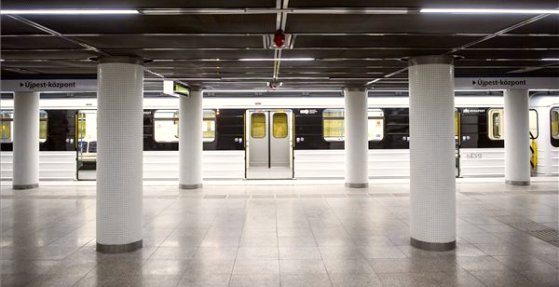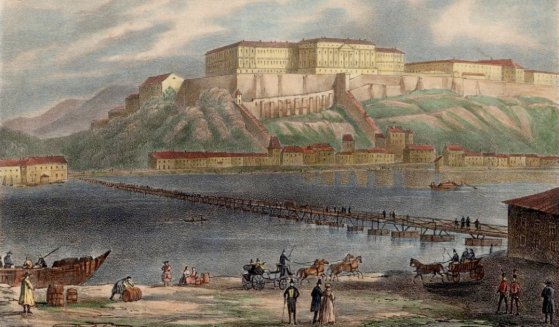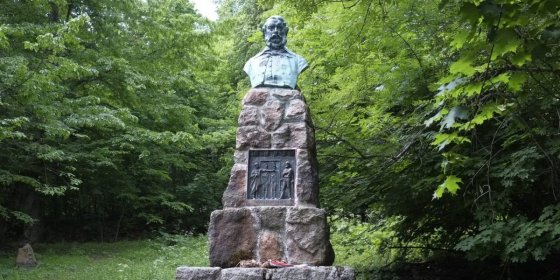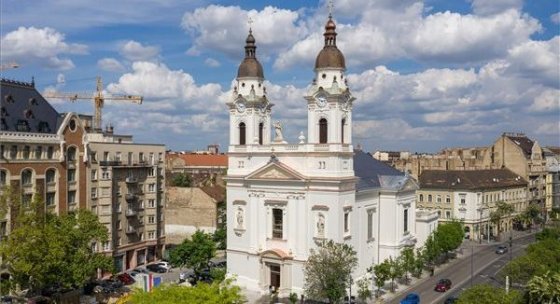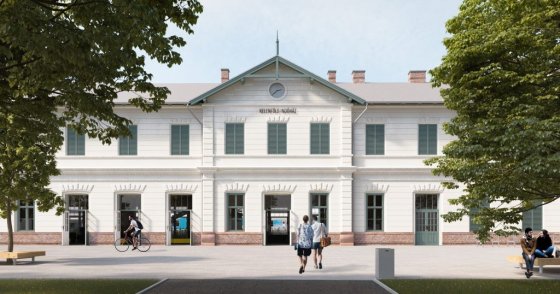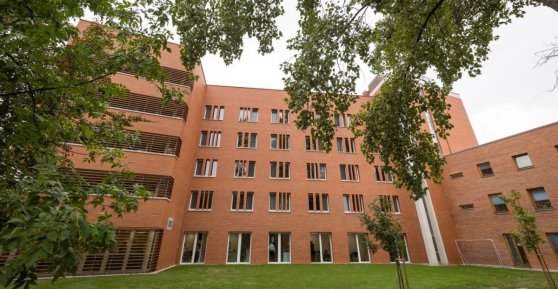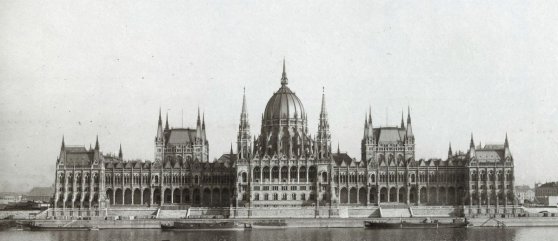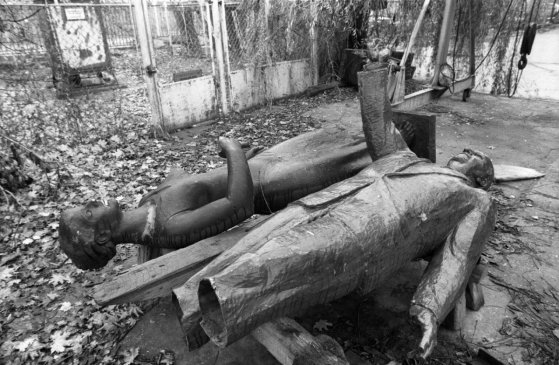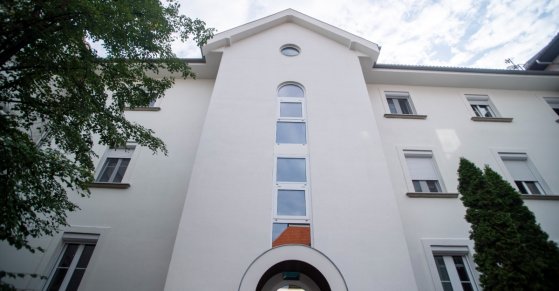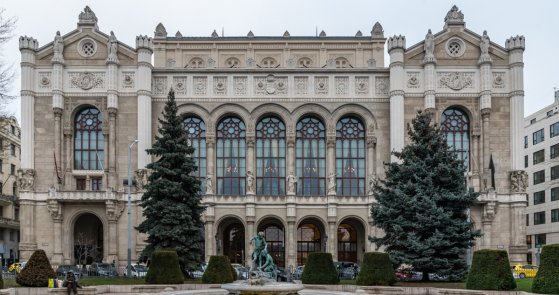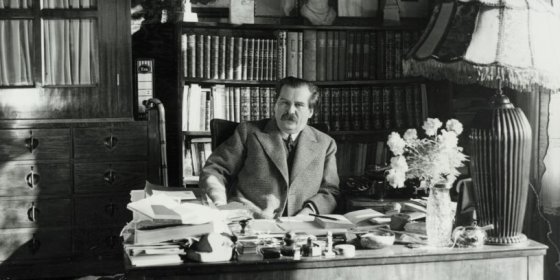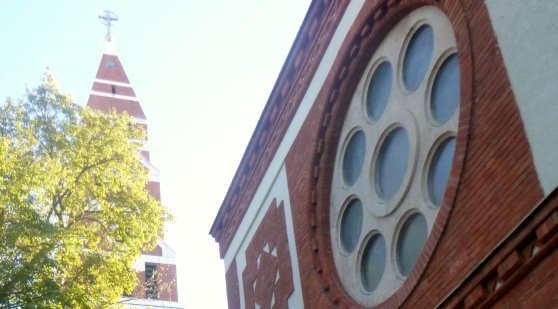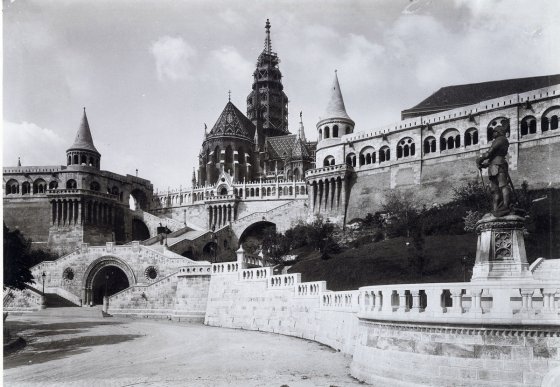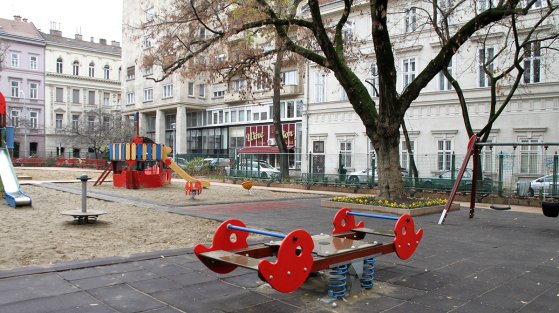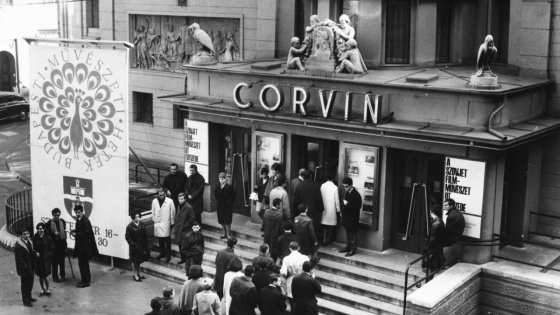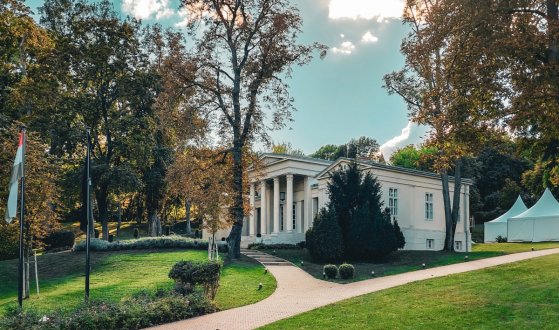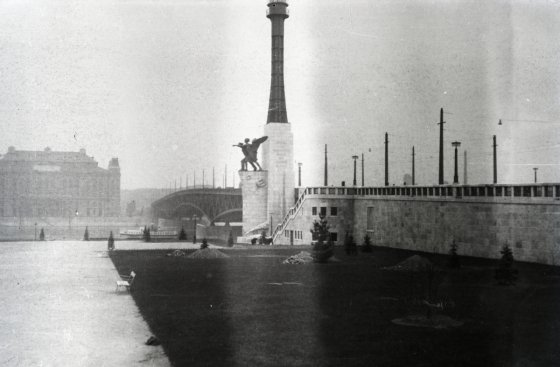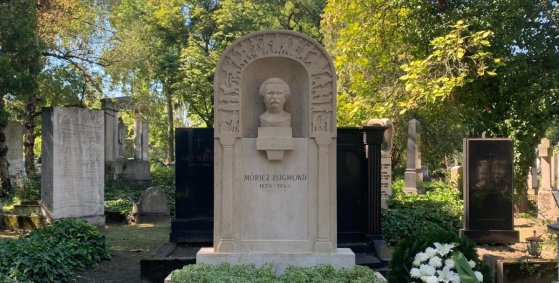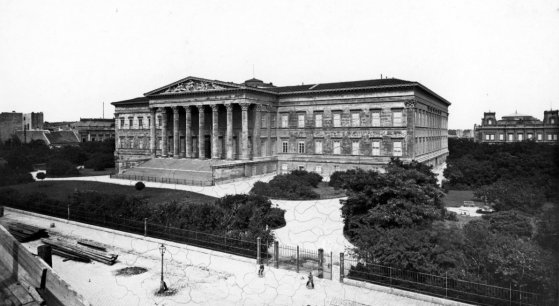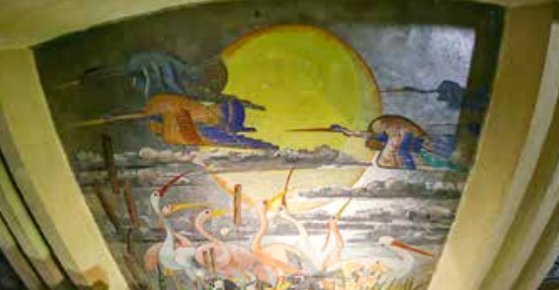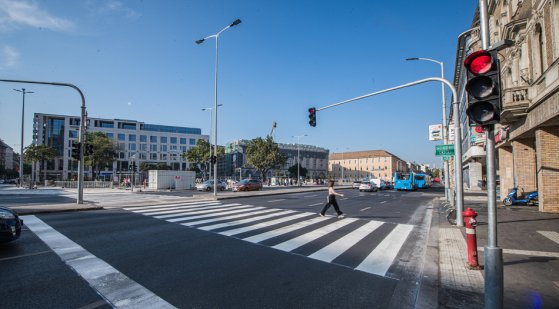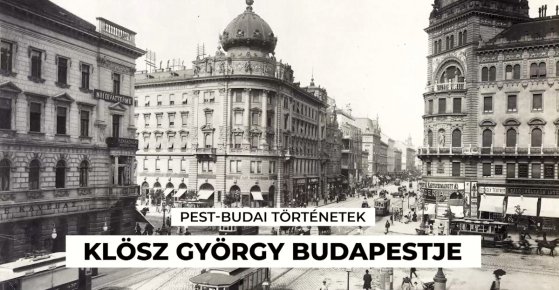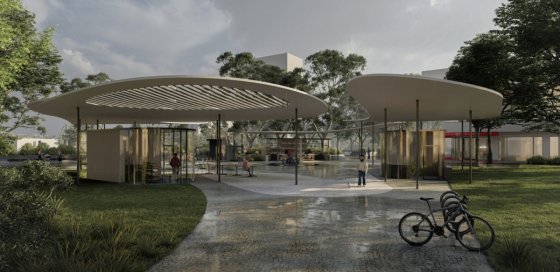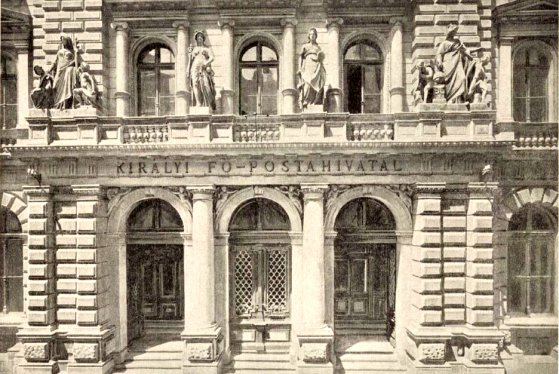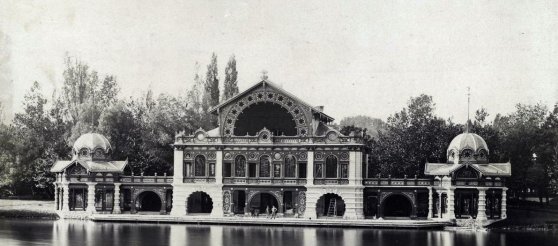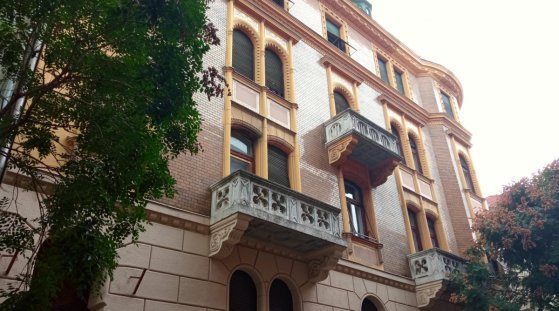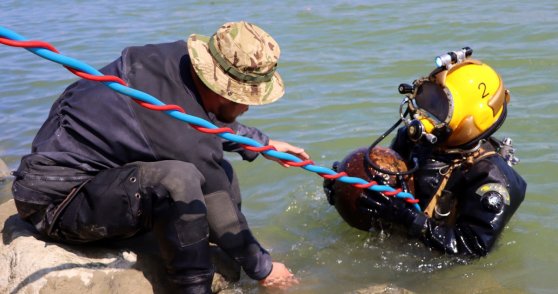 The „intertwined history” of the bridges and the city of Budapest
Which ideas and events have shaped the fate of bridges of Budapest and the cityscape? Alongside many other interesting facts, this question is also answered this newly published book by the Budapest City Archives, which introduces the history of bridges in Budapest.
The „intertwined history” of the bridges and the city of Budapest
Which ideas and events have shaped the fate of bridges of Budapest and the cityscape? Alongside many other interesting facts, this question is also answered this newly published book by the Budapest City Archives, which introduces the history of bridges in Budapest.
Budapest
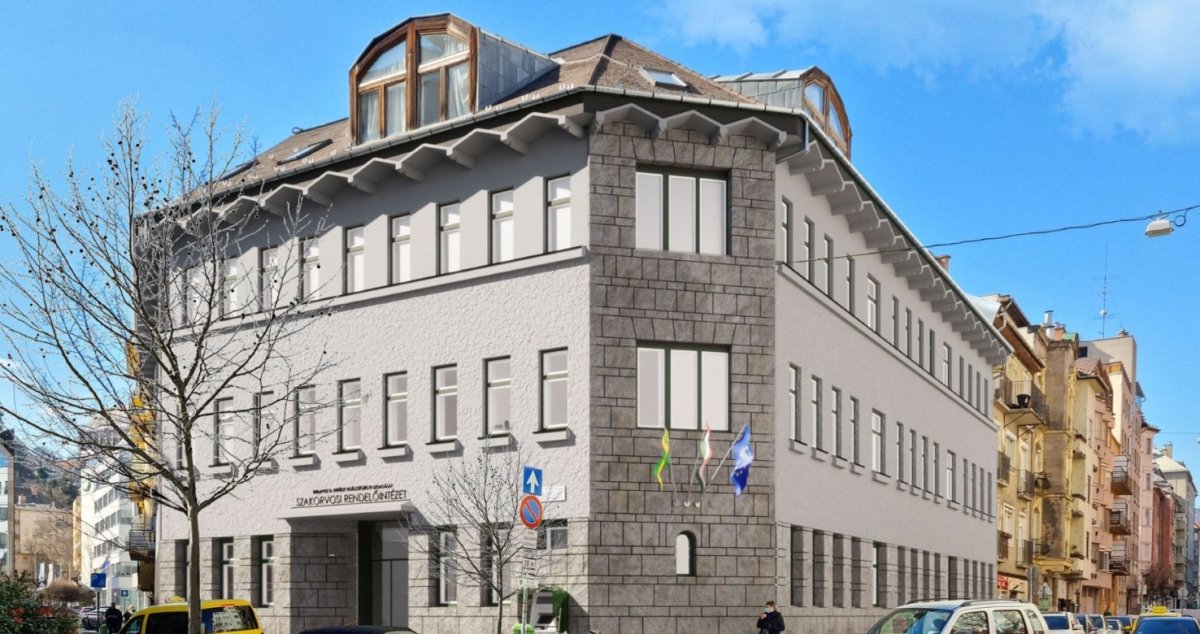 Kapás Street clinic in the 2nd District is being renovated
Kapás Street clinic in the 2nd District is being renovated
September 22, 2022 at 6:00 PM
The renovation of the specialist clinic in Kapás Street has begun. The reception area on the ground floor under renovation, the patient management system is being modernised, and medical equipment is also being purchased.
The entire section of metro line M3 will be handed over next spring
September 22, 2022 at 4:00 PM
The reconstruction of the M3 is expected to be completed in May 2023, according to BKV. Ferenciek Square and Deák Ferenc Square stations will open to passengers in January, Arany János Street and Nyugati (Western) Railway Station stops will be handed over in March, and Nagyvárad Square and Lehel Square stations will open to passengers in May.
The city's development was helped by the pontoon bridge built 255 years ago between Pest and Buda
September 22, 2022 at 1:00 PM
For nearly 100 years, a pontoon bridge built 255 years ago provided a way for traffic between Pest and Buda. But the pontoon bridge, used since 1767, was moved twenty years later because a new city quarter was planned to be built north of the Pest city walls. The bridge served traffic in its new location until the opening of the Chain Bridge, i.e. until the end of 1849.
Lajos Kossuth's first public statue in Budapest - Special creation in the Zugliget Forest
September 21, 2022 at 11:00 AM
Few people know that at the end of Mátyás Király Road in Zugliget, in the forest, there is a special, 110-year-old statue of Kossuth on a huge pedestal. On the 220th anniversary of the former reformist politician's birth, Pestbuda will show the exact circumstances under which the work of art ended up in the Zugliget Forest, and also examine whether this was really the first public Kossuth Statue in Budapest.
Interior of the St. Joseph Parish Church has been renovated
September 20, 2022 at 6:00 PM
The renovation of the St. Joseph Parish Church in the 8th District, Horváth Mihály Square, has been completed. After the renovation of the facade, the reconstruction of the interior of the church was also completed this year.
Postponed constructions in the capital
September 20, 2022 at 4:00 PM
The government decided to postpone and reschedule a total of 284 planned state investments, according to a list published a few days ago. The measure also affects construction projects in Budapest: the conversion of the Kelenföld railway station building or the development of the ELTE Trefort Garden campus will be postponed, among other things.
The new building of the Luther Home in the 11th District was inaugurated
September 19, 2022 at 6:30 PM
The new building of the Luther Home - Evangelical Student Home opened its doors in the 11th District, on the site of the headquarters of the Ecumenical Council of Churches in Hungary. The modern, 21st-century higher education college was built in Lágymányos, next to the universities.
Imre Steindl, who died 120 years ago, could not see the handover of the Parliament
September 19, 2022 at 12:30 PM
Imre Steindl's name has merged with his main work, the Budapest Parliament. Thanks to one of the largest parliament buildings in the world, the master is included in the universal history of art, which can only be said of a few Hungarian architects. However, he had to work a lot to get to this point, fortunately, the main stages of his work can still be seen today, and they largely adorn the capital. Below, Pestbuda presents his lesser-known buildings in Budapest, thus remembering the architect on the 120th anniversary of his death.
Monuments of the socialist era were dismantled 30 years ago
September 16, 2022 at 2:30 PM
Thirty years ago, the removal of statues associated with the previous regime from Budapest's public spaces began. The monuments erected during the socialist era, including the statues of Marx and Engels, Lenin, and Béla Kun, were transported to the sculpture park created in the 22nd District, where they can still be seen in an open-air exhibition ever since.
Renovated building wing of Mazsihisz Charity Hospital handed over
September 15, 2022 at 6:00 PM
The Reichmann Wing of the Charity Hospital, maintained by the Federation of Hungarian Jewish Communities, has been renovated. The new, central laboratory is now located in a separate building, and the institution was expanded with a new institute pharmacy and other service units.
An exhibition about 150 years of Hungarian monument protection has opened
September 15, 2022 at 4:00 PM
Monument protection in Hungary is 150 years old this year. The rich history of the past century and a half is presented on more than six hundred square metres at the exhibition that has just opened in Vigadó, Pest. Visitors can get to know the different types of monuments, the award-winning restorations of the past years, and the history of monument protection can be traced along a timeline.
The Pest homes of Zsigmond Móricz, who died 80 years ago
September 15, 2022 at 9:00 AM
Not only Dezső Kosztolányi (Üllői úti fák [Trees of The Üllői Road]) but also Zsigmond Móricz could come to our mind when we think of Üllői Road. One of the most famous authors of 20th-century Hungarian realist prose literature lived for twenty years in his home on Üllői Road, where such defining works as Tragédia [Tragedy] and Légy jó mindhalálig [Be Faithful Unto Death] were written. After the suicide of his first wife, the writer moved to an apartment building on Fővám Square with his daughters and then lived for a short time in an apartment in a pre-modern style house on Bartók Béla Road. Zsigmond Móricz, whose name is preserved by public works, public institutions, literary scholarships and numerous public spaces, died eighty years ago.
The predecessor of Open-Air Stage: The Park cinema opened a 100 years ago in Városmajor
September 14, 2022 at 5:00 PM
Over the past hundred years, a lot has changed in Városmajor, but culture and guaranteed entertainment have always been present and can still be found in the capital's first public park. The predecessor of the Városmajor Open-Air Stage, the open-air Park cinema, opened here more than a hundred years ago, but the fate of the park was also very interesting after that. In 1935, the well-known stage was built, which, along with its surroundings, has undergone continuous transformations over the past century, including recent times.
The St. Michael's Church in Angyalföld was renovated
September 14, 2022 at 2:00 PM
The exterior renovation of the St. Michael's Church on Babér Street in the 13th District has been completed. The Neo-Romanesque church, built of reddish brick and white stone, was built in 1930 according to the plans of Ernő Foerk.
A smart kindergarten is being built in the 13th District
September 13, 2022 at 8:00 PM
Hungary's first smart kindergarten will be built without demolishing the old building. During the reconstruction and expansion of the 13th District panel building, aspects of sustainability and digital development are also taken into account.
Skulls under the Fisherman's Bastion - The Forgotten St. Michael's Chapel
September 13, 2022 at 2:30 PM
In the last years of the 19th century, during the works before the foundation of the Fisherman's Bastion, a cavity hiding skulls emerged from the ground, which the architect Frigyes Schulek referred to as one of the Castle's old dungeons. But he could have guessed its original function because he deemed it worthy of preservation, but the place was then forgotten again, only to be found again in the middle of the 20th century: now the place has been identified as the medieval St. Michael's Chapel, which since 1997 has been one of the most interesting details of the Fisherman's Bastion.
The renovation of Hild Square will begin in September
September 12, 2022 at 5:00 PM
The Hild Square playground in the 5th District will be completely renovated, as well as the public areas connected to the square and a small section of Mérleg Street. An accessible washroom will be built on the square, and a drinking fountain, a humidifier, a ping-pong table, new benches and bike racks will also be installed.
The wide-screen cinema in Pest is 65 years old: Corvin presented a Soviet film
September 12, 2022 at 2:00 PM
Today, it is natural that the screen in the cinema is huge, it can be up to 24 metres wide and 18 metres high, and you can watch movies with surround sound or in 3D. In the 1950s, however, it was different in Hungary, the screens in the cinema were only a few metres wide. The first wide-screen cinema was Corvin, damaged during the revolution and rebuilt in 1957.
The first gems of the Hegyvidék - József Hild's villas in Buda
September 11, 2022 at 10:30 AM
More and more people moved from Pest, which began to grow in the first half of the 19th century, to the mountains of Buda, because instead of traffic and crowding, calmness and fresh air awaited them there. The larger plots also made it possible to build free-standing villas with gardens, many of which were designed by the most employed architect of the period, József Hild.
Horthy Miklós Bridge was built eighty-five years ago - After the post-war reconstruction, it became Petőfi Bridge
September 10, 2022 at 10:00 AM
The Petőfi Bridge is perhaps the least known bridge in inner city Budapest. It is not a spectacular creation, it is not photographed by visiting tourists, but still, from a traffic point of view, it is one of the most important crossings in the city. The bridge was handed over 85 years ago, on 12 September 1937, back then it was called Horthy Miklós Bridge.
Zsigmond Móricz was remembered in the Fiumei Road Cemetery
September 9, 2022 at 9:00 PM
Zsigmond Móricz died on 5 September 1942, at the age of 63. On the occasion of the 80th anniversary of his death, a memorial service was held in the Fiumei Road Cemetery. His tombstone, which was created by his good friend Ferenc Medgyessy, a Kossuth Prize-winning sculptor, was also renovated for the anniversary.
He was called the cultural pope of dualism - Ferenc Pulszky died 125 years ago
September 9, 2022 at 10:30 AM
Ferenc Pulszky was the director of the Hungarian National Museum for a quarter of a century, and there he assisted the founding of other museums created during that period. But Ferenc Pulszky was much more than perhaps the most significant director of the Hungarian National Museum, he was the "culture pope" of dualism.
The renovation of the fresco depicting the biblical story of creation in the church in Városmajor has been completed
September 8, 2022 at 5:00 PM
The restoration of the monumental Vilmos Aba-Novák fresco depicting the seven days of creation in the church in Városmajor has been completed. The 160-square-metre fresco consists of seven large pictures of creation and 42 small pictures with biblical themes. Now the part depicting the seventh day can be seen on the ceiling in its original beauty as well.
The newest pedestrian crossing at Blaha Lujza Square was handed over
September 8, 2022 at 2:00 PM
The intersection of Rákóczi Road and Outer Ring Road can now be crossed freely on the surface in all directions, as the third new pedestrian crossing at the Blaha Lujza Square junction has been completed. The pedestrian crossing is located on Rákóczi Road, on the Erzsébet Bridge side.
Time travel with György Klösz who photographed old Budapest for decades
September 7, 2022 at 4:00 PM
Thanks to his legacy as a photographer, we get a detailed picture of the state of Budapest after the unification, the structure and construction of the city, the old houses, the decoration of the buildings, the people appearing on the streets, their clothing, their lifestyle, and the everyday life of the Hungarian capital. The cityscapes of György Klösz are objective, yet they provide a special aesthetic experience, without them, we would look at the Budapest of the time in a completely different way. We visited the locations captured by him with Pestbuda's photographer and present them on video (in Hungarian).
Design renders of the Ecseri Road metro station and its surroundings
September 7, 2022 at 2:00 PM
The winning tender was selected, based on which the Ecseri Road metro station and its surroundings will be renovated. The design renders show that there will be pavilions with glass walls and new plants. The surface arrangement of the metro station is expected to begin in the spring of 2023.
Two floors were built on it, but the historic building of the city centre Main Post Office still stands empty
September 6, 2022 at 3:00 PM
Almost 150 years ago, in 1873, the imposing building of the Royal Hungarian Main Post Office was completed in the city centre. The floor plan and cost plan of the postal palace bounded by three streets were prepared by Henrik Koch, and the plans for the glass roof of the inner courtyard were prepared by Antal Szkalnitzky. The historic building bordered by Petőfi Sándor, Párizsi and Városház Streets was also privately owned, and they wanted to turn it into a hotel more than ten years ago, but the former Main Post Office is still unused today.
The first efforts of a genius - Ödön Lechner's early buildings
September 4, 2022 at 11:00 AM
Ödön Lechner became really famous for the Hungarian architectural design language, which he began to use from the last decade of the 19th century. However, his career as a designer started much earlier, at the very beginning of the 1870s, and he had a nice upward curve: one hundred and fifty years ago, several buildings were realized at the same time according to his ideas, although not yet in the style that would later become characteristic. We present some of them below.
110-year-old jewel-box in Bokréta Street - Home of a car manufacturing dynasty
September 3, 2022 at 2:30 PM
On the corner of Tűzoltó Street and Bokréta Street in Ferencváros, there is an eye-catching residential building. Passers-by often stop to take a closer look at its building ceramics, its carefully and artistically carved gate or the small corner tower that decorates its dome. The house was once the home of the internationally famous Zupka carriage manufacturer and then vehicle body builder family, and it was built right next to the factory in 1912. On the site of the assembly plant, a modern residential building stands in Tűzoltó Street, but the former family home designed by the architect János Bach has fortunately been preserved for posterity.
A more than 300-year-old cannonball was found between the Chain Bridge and the Erzsébet Bridge in the Danube
September 3, 2022 at 10:00 AM
A 17th-century mortar ball was brought to the surface by the bomb-disposal experts from the bed between the Danube Chain Bridge and Erzsébet Bridge. The cannonball with a diameter of 30 centimetres did not contain any pyrotechnic material. The special find may have been dormant in the river since the siege of Buda in 1686.
More articles
 The „intertwined history” of the bridges and the city of Budapest
Which ideas and events have shaped the fate of bridges of Budapest and the cityscape? Alongside many other interesting facts, this question is also answered this newly published book by the Budapest City Archives, which introduces the history of bridges in Budapest.
The „intertwined history” of the bridges and the city of Budapest
Which ideas and events have shaped the fate of bridges of Budapest and the cityscape? Alongside many other interesting facts, this question is also answered this newly published book by the Budapest City Archives, which introduces the history of bridges in Budapest.
 The Bridge Report, which brought a turning point in the history of Budapest
A travel report that changed the history of Pest and Buda, as well as Hungary. The little book contributed to the change of half a thousand years of legal customs and the implementation of an investment of unprecedented size and technical quality. This book was The Bridge Report [Hídjelentés in Hungarian].
The Bridge Report, which brought a turning point in the history of Budapest
A travel report that changed the history of Pest and Buda, as well as Hungary. The little book contributed to the change of half a thousand years of legal customs and the implementation of an investment of unprecedented size and technical quality. This book was The Bridge Report [Hídjelentés in Hungarian].
 Drama on the university wall - The heroic monument was planned 95 years ago
In the constant hustle and bustle of the Egyetem Square in Pest, the students may not even notice the monument that decorates the short section of wall between the church and the central building of ELTE. However, it commemorates their predecessors, the heroes who fought for their country in World War I, and those who heroically helped them. The first design of the dramatically collapsing soldier was born in 1928, ninety-five years ago.
Drama on the university wall - The heroic monument was planned 95 years ago
In the constant hustle and bustle of the Egyetem Square in Pest, the students may not even notice the monument that decorates the short section of wall between the church and the central building of ELTE. However, it commemorates their predecessors, the heroes who fought for their country in World War I, and those who heroically helped them. The first design of the dramatically collapsing soldier was born in 1928, ninety-five years ago.

